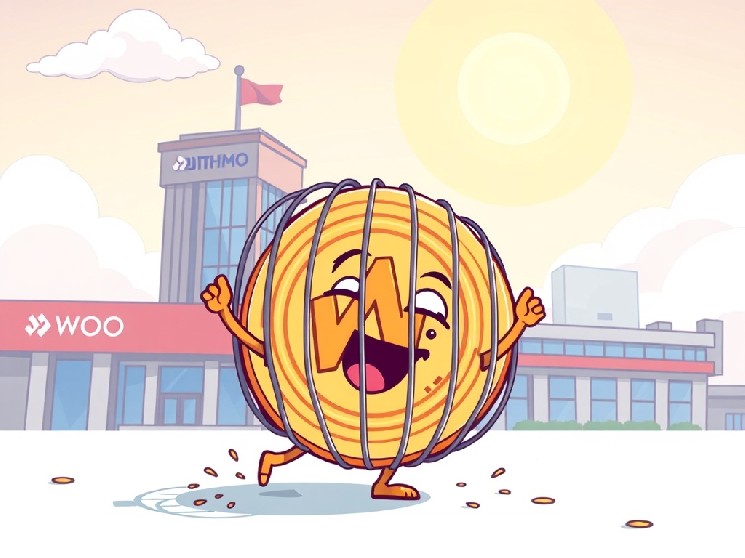Exciting news for WOO holders! South Korean crypto exchange Bithumb recently announced a significant development: the Bithumb WOO removal from its closely monitored cautionary asset list. This pivotal decision, made by the Digital Asset eXchange Alliance (DAXA), marks a positive turning point for the WOO Network and its community.
What Does a ‘Cautionary Asset’ Signify?
When a cryptocurrency lands on an exchange’s cautionary asset list, it signals heightened scrutiny. Exchanges place assets on this list due to various concerns, which might include:
- Low liquidity: Not enough trading activity.
- Technical issues: Problems with the blockchain or network.
- Regulatory concerns: Potential compliance issues.
- Market manipulation risks: Unusual price movements.
For investors, an asset on this list often represents increased risk. It suggests the exchange is closely monitoring the asset, and in some cases, it can even precede a delisting if the issues are not resolved. Therefore, the Bithumb WOO removal from this list is a strong positive indicator.
The Crucial Role of DAXA in South Korea’s Crypto Landscape
The Digital Asset eXchange Alliance (DAXA) plays a vital role in South Korea’s burgeoning crypto market. This consultative body comprises the country’s leading cryptocurrency exchanges, including Bithumb, Upbit, Coinone, Korbit, and Gopax.
DAXA’s primary purpose is to foster a healthy, transparent, and secure digital asset trading environment. They collaborate on:
- Establishing self-regulatory guidelines.
- Enhancing investor protection.
- Preventing illicit activities.
Their collective decisions, such as the one leading to the Bithumb WOO removal, carry significant weight within the industry. It shows a unified stance on market integrity.
The Positive Ripple Effect of Bithumb WOO Removal
The decision to remove WOO from the cautionary list sends a powerful message. It indicates that the WOO Network has successfully addressed the concerns that initially led to its placement on the list. This has several positive implications:
For WOO Network:
- Improved Perception: Enhances WOO’s legitimacy and credibility in the eyes of investors and other exchanges.
- Increased Confidence: Boosts trust among current and potential holders, potentially attracting new capital.
- Enhanced Liquidity: May lead to higher trading volumes as investor apprehension decreases.
For Investors:
- Reduced Risk: Lowers the perceived risk associated with holding or trading WOO on Bithumb.
- Potential for Growth: Creates a more stable environment for WOO’s price appreciation.
- Validation: Confirms that WOO has met the stringent standards set by a major exchange and DAXA.
The Bithumb WOO removal effectively lifts a significant cloud that had been hanging over the asset.
Navigating the Future: What’s Next for WOO?
With the cautionary status lifted, the WOO Network can now focus on its core mission with renewed vigor. This positive development provides a strong foundation for future growth and expansion.
The team will likely continue to prioritize:
- Product Development: Enhancing their decentralized exchange and other offerings.
- Partnerships: Forging new alliances to expand their ecosystem.
- Compliance: Maintaining rigorous standards to prevent future regulatory concerns.
This event serves as a testament to WOO’s commitment to building a robust and compliant platform. It sets a precedent for how projects can work with exchanges to resolve issues and regain trust.
The Bithumb WOO removal from the cautionary asset list is more than just an administrative update; it’s a significant vote of confidence. It reflects WOO Network’s diligence in addressing concerns and DAXA’s commitment to maintaining a fair and secure market. This development is undoubtedly a positive step for WOO, signaling a clearer path forward and potentially opening doors for greater adoption and investor interest in the dynamic South Korean crypto landscape.
Frequently Asked Questions (FAQs)
Q1: What is DAXA?
DAXA stands for the Digital Asset eXchange Alliance. It is a consultative body formed by major South Korean cryptocurrency exchanges, including Bithumb, Upbit, Coinone, Korbit, and Gopax, to establish self-regulatory guidelines and enhance investor protection.
Q2: Why was WOO on Bithumb’s cautionary list?
While the specific reasons are often not fully disclosed, assets are typically placed on a cautionary list due to concerns like low liquidity, technical issues, regulatory compliance challenges, or risks of market manipulation. The Bithumb WOO removal indicates these issues have been addressed.
Q3: What does this removal mean for WOO’s price?
The removal generally reduces investor uncertainty and improves market perception, which can lead to increased investor confidence, higher trading volumes, and potentially a positive impact on WOO’s price in the long term. However, crypto prices are subject to many factors.
Q4: Are there other assets on Bithumb’s cautionary list?
Bithumb, like other exchanges, regularly reviews and updates its cautionary and delisting lists based on ongoing monitoring and evaluation of various digital assets. Investors should check Bithumb’s official announcements for the most current information.
Q5: How can investors stay informed about such changes?
Investors should regularly check the official websites and announcement pages of the exchanges they use, such as Bithumb. Following reputable crypto news outlets and the official social media channels of projects like WOO Network can also help.
Did you find this article insightful? Share this crucial update about the Bithumb WOO removal with your network on social media to keep fellow crypto enthusiasts informed!
To learn more about the latest crypto market trends, explore our article on key developments shaping digital assets’ future trends.
Disclaimer: The information provided is not trading advice, Bitcoinworld.co.in holds no liability for any investments made based on the information provided on this page. We strongly recommend independent research and/or consultation with a qualified professional before making any investment decisions.

